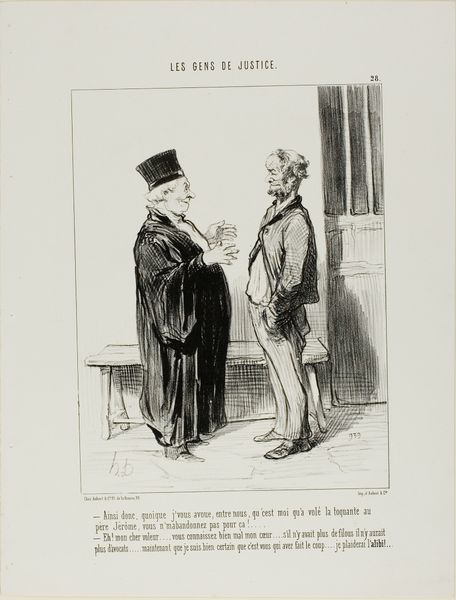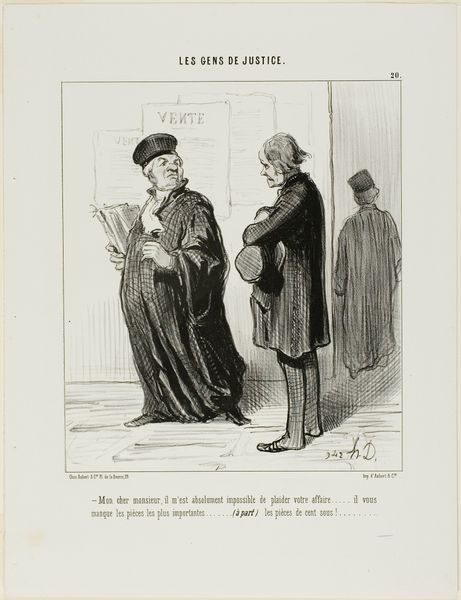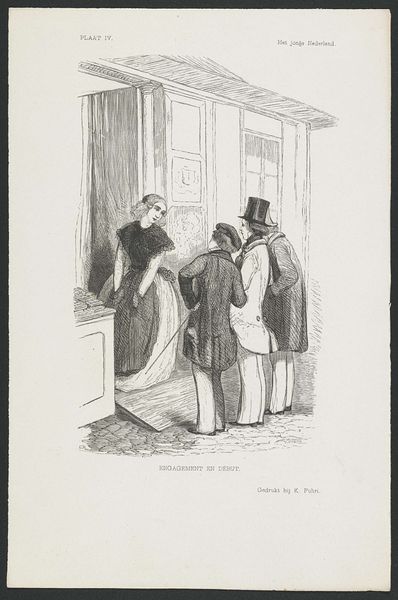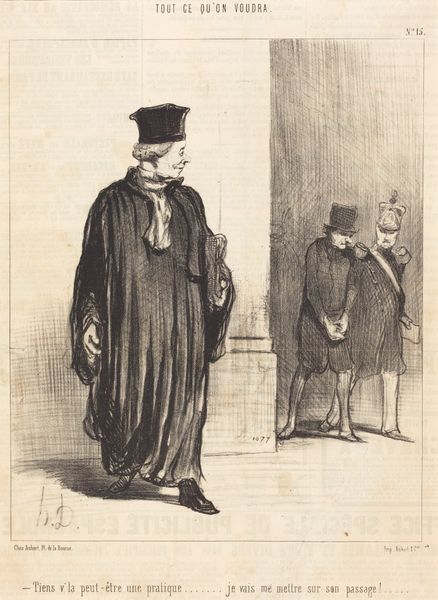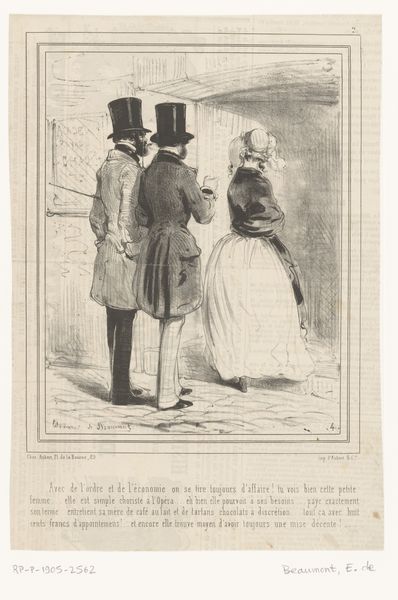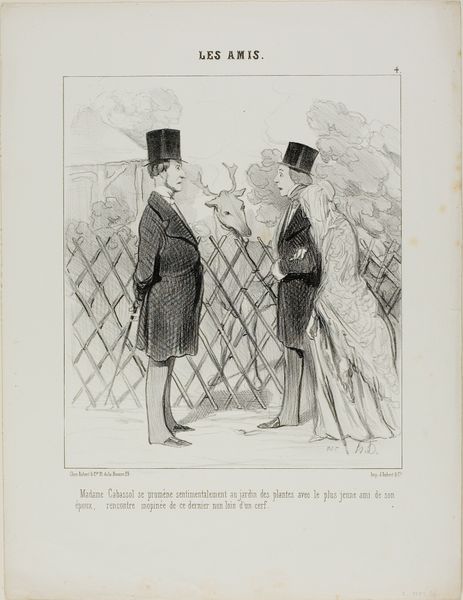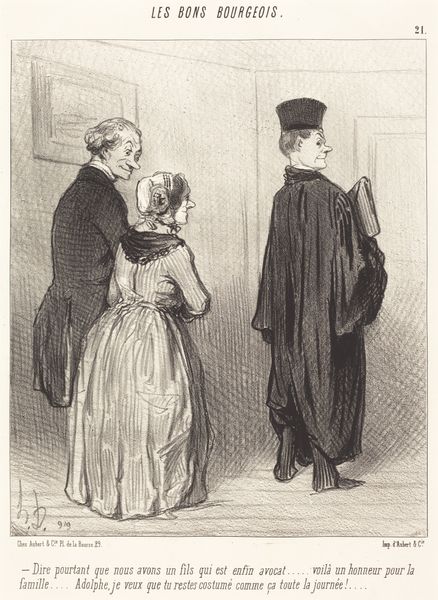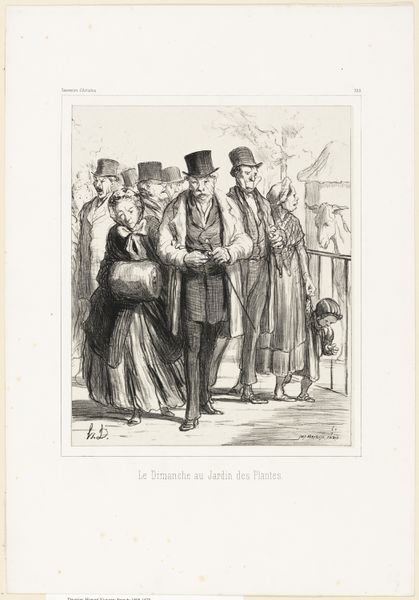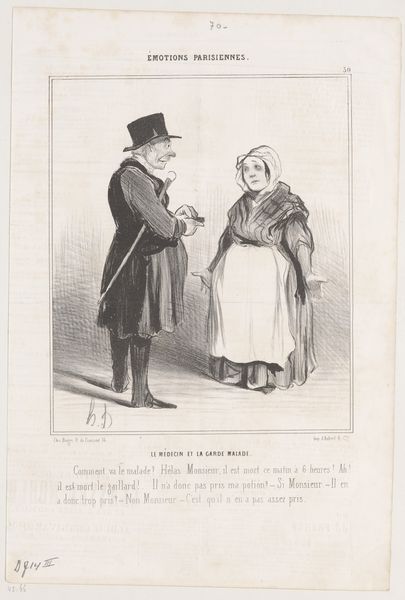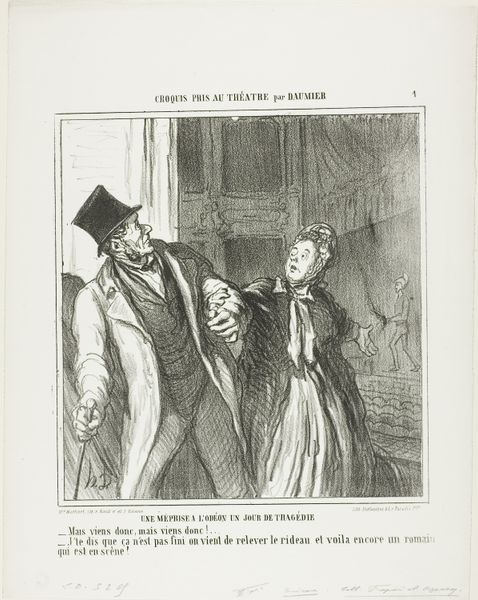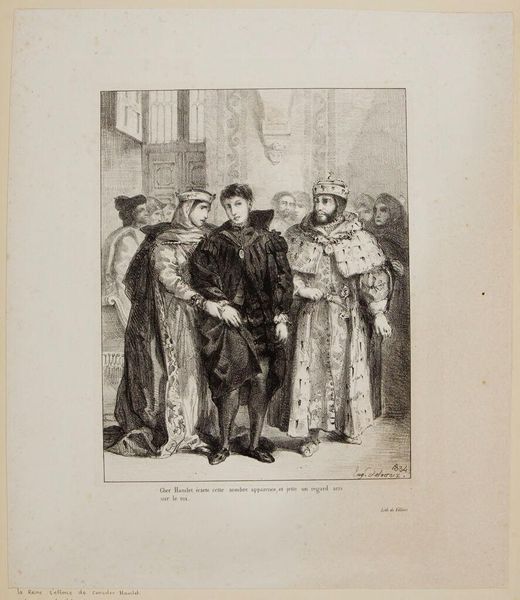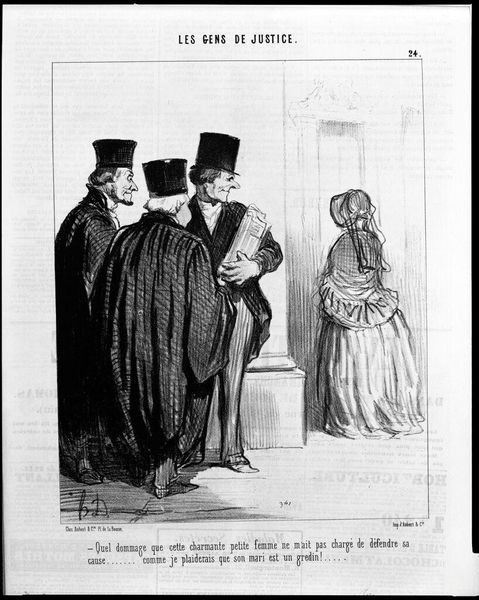
“What a shame this lovely little lady didn't ask me to present her case in Court... I would love to plead that her husband is a rogue...,” plate 24 from Les Gens De Justice 1846
0:00
0:00
drawing, lithograph, print, paper
#
drawing
#
lithograph
# print
#
caricature
#
paper
#
france
#
genre-painting
#
realism
Dimensions: 240 × 189 mm (image); 338 × 262 mm (sheet)
Copyright: Public Domain
Curator: Here we have a lithograph by Honoré Daumier, dating back to 1846. The title is quite a mouthful: “What a shame this lovely little lady didn't ask me to present her case in Court... I would love to plead that her husband is a rogue...,” part of his series "Les Gens de Justice." Editor: What strikes me is the contrast. You have this cluster of darkly robed figures, almost a unified mass, observing the delicate figure of a woman rendered in lighter strokes. It sets such a distinct tone. Curator: Indeed, Daumier’s masterful use of lithography allows him to depict the stark reality of social injustice. The materiality of the print—the very paper and ink—serves as a medium for this incisive commentary on the French legal system, reflecting his involvement in the political and social movements of the time. Editor: From a formal standpoint, the lines vary in thickness and direction to delineate the characters. Note the robust strokes that create shadows versus the delicate hatching used to show her vulnerability. The composition leads your eye right to her figure, even though she's turned away. Curator: Exactly. Daumier was deeply concerned with the working conditions of laborers, lawyers included. He depicted various professions to underline that everyone plays a role in society. In essence, he captures a world where labor and social status become intertwined, as reflected through costume and setting. Editor: It speaks to more than just social commentary, though. It’s almost theatrical, from the body language to the exaggerated features. You have the voyeuristic lawyers ogling this woman. Daumier's command over line creates this dark stage. Curator: He had a clear political stance, especially regarding judicial power and inequality. "Les Gens de Justice" exposes this unfairness through visual narratives made accessible to the public. This isn’t about high art in an ivory tower; it’s about making a statement with available materials. Editor: So it becomes less about whether it's "fine art" and more about its impact—a tool of satire using form to express an attitude. It uses composition, scale, and perspective not just for visual delight but to make us question the ethics displayed within the judicial arena. Curator: Daumier's commitment to addressing social problems, by means of widely reproducible print media, places him as a pioneer when discussing art and mass culture in France. Editor: Indeed. Looking at it this way underscores the brilliance of Daumier's technique to use form as its own language, as potent today as it was nearly two centuries ago.
Comments
No comments
Be the first to comment and join the conversation on the ultimate creative platform.
